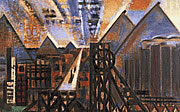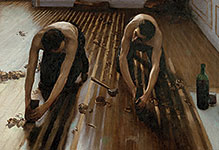
Daily Life
Work, Leisure, Clothing and Textiles, Politics and Portraits, Furniture, Houshold, Funerals, Death, Murder, Family.

#03030131
Cyrus Cylinder, Babylonian, from Babylon, 539-530 BCE. An account by Cyrus, Kin...

#03030132
This stele comes from the Tophet in Carthage (today Tunisia) Such grave markers...

#03030142
Clay plaque showing a banqueter, from Uruk (Warka), 1st CE. The plaque shows a...

#03030143
Queen's lyre from Ur, southern Iraq, 2600-2400 BCE. Stringed instrument with a b...

#03030148
Plaque depicting King Eannatum, around 2450-2300 BCE. Fragment of a stone plaque...

#03030159
Bronze figurine of a warrior, Canaanite, 2000-1700 BCE. He wears a broad belt f...

#03030170
"The Dying Lion", a stone panel from Ninveh, northern Iraq, Neo-Assyrian, 645 BC...

#030302 8
The Taylor-Prism, Neo-Assyrian, from Niniveh,northern Iraq, 691 BCE. This six-si...

#030302 9
Bronze statuette of a rider, Achaemenid, 5th-4th century BCE, a rare representat...

#03030210
Ivory cosmetic box in the shape of a fish, Canaanite, from Tell es-Sa'idiyeh, Jo...

#03030212
Crushed skull of a soldier with a copper helmet from Ur, Mesopotamian, southern...

#03030219
Two assyrian dignitaries placed behind the royal throne, scene of audience Tell...






